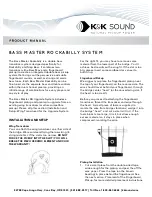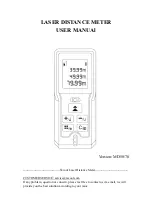
<fcode>
Meaning
none
super
user
emulator load, defaults to supervisor
space
supervisor address space
user address space
The emulator can load HP64000 or IEEE-695 format absolute files into emulation
or target system memory. So, you can develop programs on your UNIX
workstation; then build the programs and load them into the emulator for
debugging.
Use the memory type parameter if you want to load only the parts of the program
that have addresses corresponding to those types of memory in the map.
Example
To load the executable part of your absolute file into memory and any symbolic
information found in the absolute file, choose File
→
Load
→
Executable...
To load the executable part of your absolute file into memory but not load symbolic
information found in the absolute file, choose File
→
Load
→
Program Only...
To load only the symbolic information found in the absolute file (without loading
the executable part of your absolute file), choose File
→
Load
→
Symbols Only...
Suppose you are using two MMU mappings, one of which is user space from 1000
through 1fff hex. The other is supervisor space from 1000 through 1fff hex. You
have absolute files called userprog.x and supprog.x. To load these programs using
the command line, enter:
load userprog fcode user
load supprog fcode super
The programs are loaded into the correct address space.
Chapter 4: Using the Emulator
Loading and Storing Programs
117
Summary of Contents for 64783A
Page 30: ...xxx ...
Page 31: ...Part 1 Quick Start Guide 1 ...
Page 33: ...1 Getting Started 3 ...
Page 70: ...40 ...
Page 75: ...Part 2 Using The Emulator 45 ...
Page 140: ...110 ...
Page 141: ...4 Using the Emulator How to control the processor and view system resources 111 ...
Page 227: ...5 Using the Emulation Bus Analyzer How to record program execution in real time 197 ...
Page 290: ...260 ...
Page 331: ...8 Configuring the Emulator 301 ...
Page 382: ...352 ...
Page 383: ...9 Solving Problems What to do when the emulator doesn t behave as expected 353 ...
Page 397: ...Part 3 Reference 367 ...
Page 399: ...10 Using Memory Management Understanding logical and physical emulation and analysis 369 ...
Page 429: ...11 Emulator Commands The command syntax reference for the emulator softkey interface 399 ...
Page 443: ...copy Chapter 11 Emulator Commands copy 413 ...
Page 451: ...display Chapter 11 Emulator Commands display 421 ...
Page 457: ...DISPLAY MEMORY Chapter 11 Emulator Commands DISPLAY MEMORY 427 ...
Page 461: ...DISPLAY MMU Chapter 11 Emulator Commands DISPLAY MMU 431 ...
Page 464: ...DISPLAY TRACE Chapter 11 Emulator Commands DISPLAY TRACE 434 ...
Page 480: ...modify Chapter 11 Emulator Commands modify 450 ...
Page 501: ...set Chapter 11 Emulator Commands set 471 ...
Page 514: ... SYMB Chapter 11 Emulator Commands SYMB 484 ...
Page 582: ...552 ...
Page 583: ...13 Setting X Resources 553 ...
Page 598: ...568 ...
Page 606: ...576 ...
Page 613: ...16 Specifications and Characteristics 583 ...
Page 627: ...Part 4 Concept Guide 597 ...
Page 629: ...17 X Resources and the Graphical User Interface 599 ...
Page 639: ...Part 5 Installation and Service Guide 609 ...
Page 697: ...19 Installation and Service 667 ...
Page 746: ...Chapter 19 Installation and Service Verifying the Installation 716 ...
Page 755: ...20 Installing Updating Emulator Firmware 725 ...
Page 762: ...732 ...
Page 778: ...748 ...
Page 810: ...X server 554 604 X Window System 54 Index 780 ...
















































